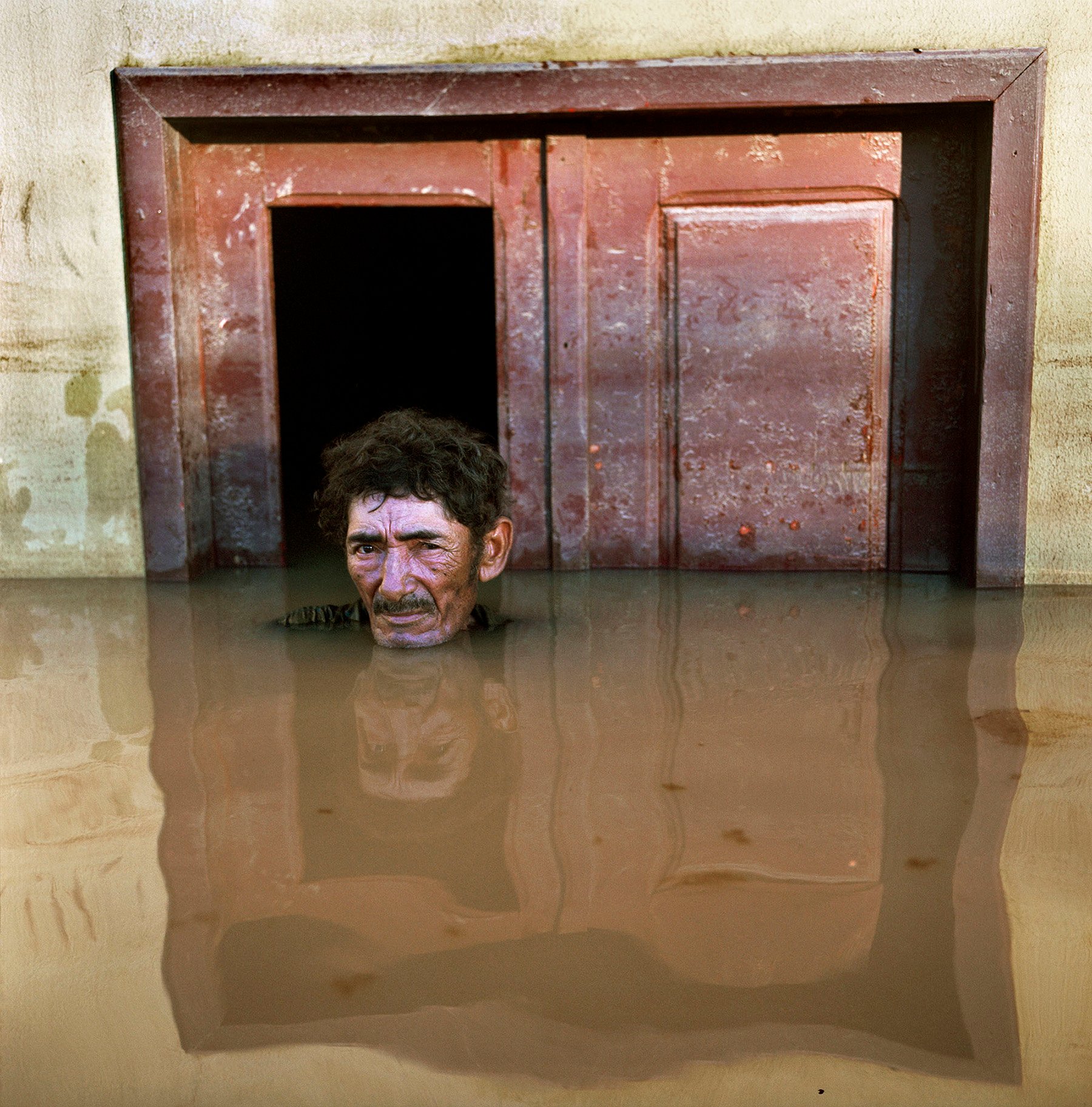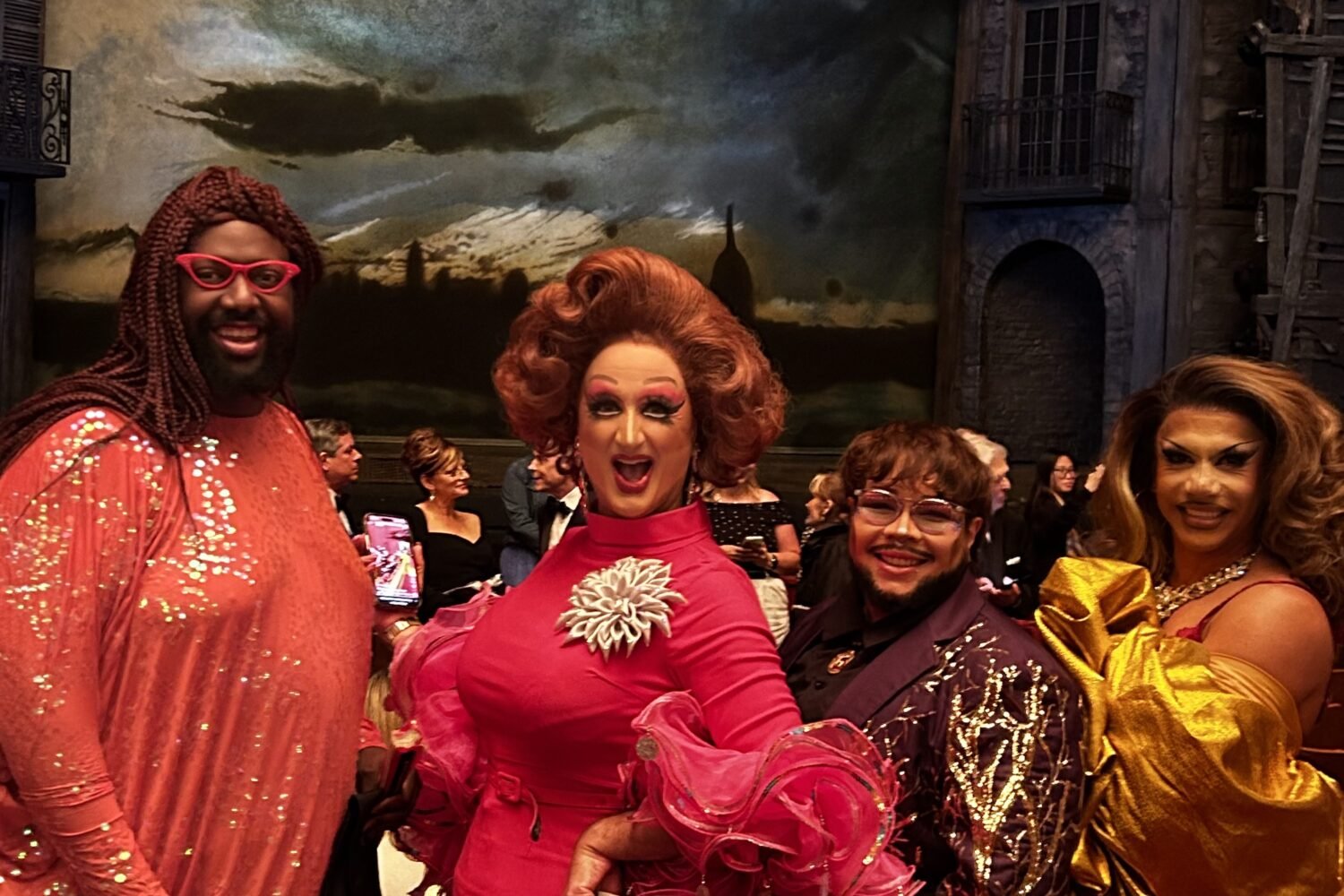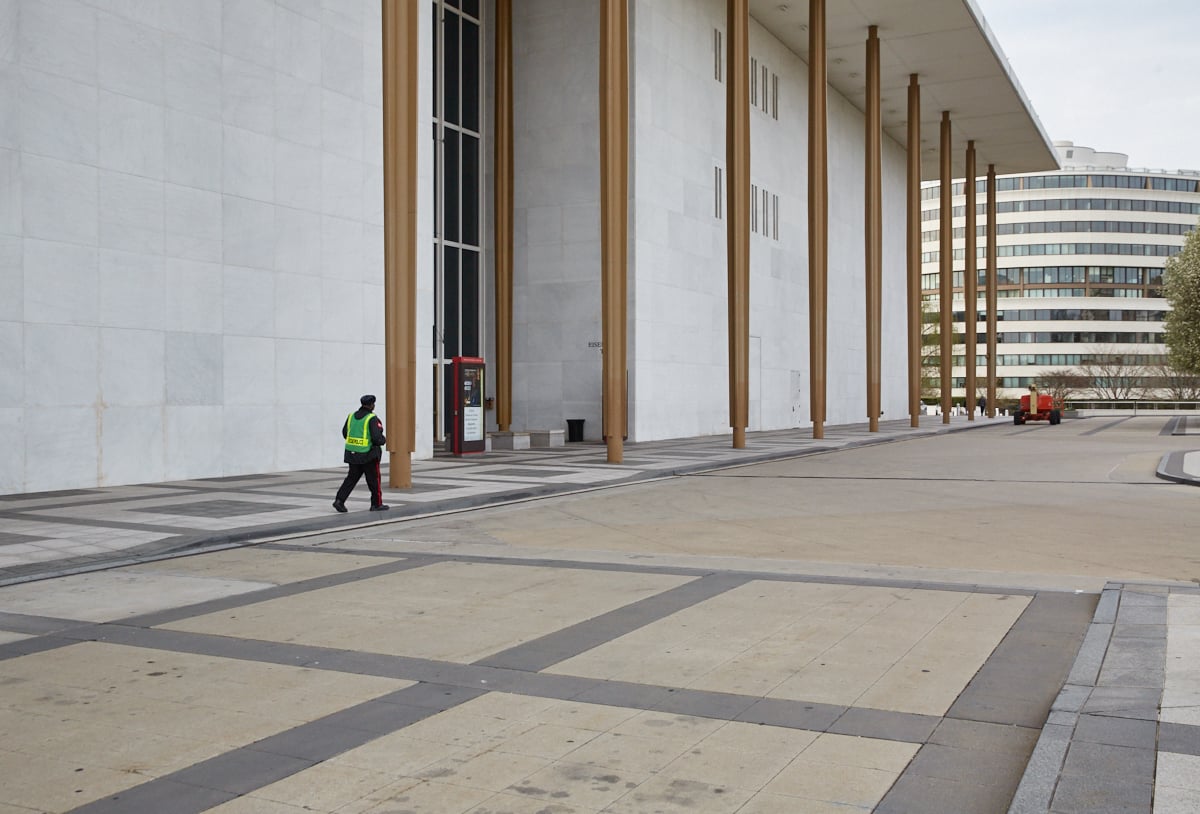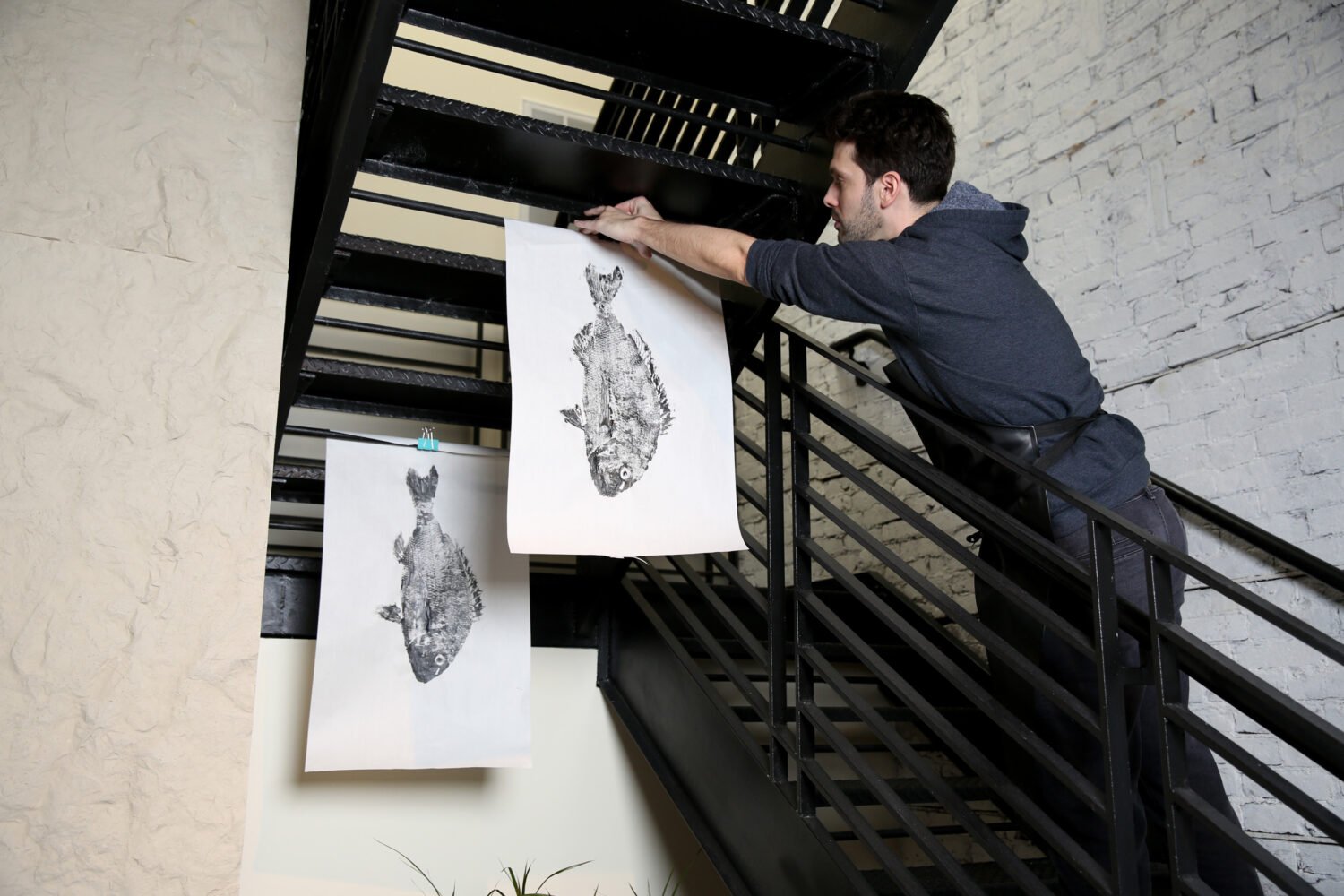You know that fossil fuels are bad, that glaciers are melting, and that sea levels are rising. But an immersive documentary photography exhibition at the Kennedy Center called COAL + ICE argues that it’s not enough for us to just be aware of the climate crisis.
The show, produced by the nonprofit Asia Society, illuminates the relationship between coal industry and ice glaciers through the work of 50 photographers and video artists from around the world. As people walk into the 30,000 square-foot exhibition space, they are met with suspended photographs of the Himalayan mountains and glaciers that surround historical and contemporary portraits of coal miners. These portraits are organized into small cubicles, in which four images face other. As viewers move through the cubicles, they can see images that portray the root and impact of climate change. Magnum photographer Susan Meiselas and exhibition designer Jeroen de Vries curated the show to make viewers feel what they are seeing, rather than just thinking about it.“It’s a different relationship than experiencing the material that you have lived through or read about in the news,” Meiselas says. “You experience it differently in this immersive space and these projected digital projections.”

The now-extensive exhibition of photographs has gone through many transformations over the past decade. It started as a much smaller collection of coal photographs taken by 18 Chinese photographers called “Mined in China.” In 2008, Meiselas and Orville Schell, the author and journalist who heads the Center of U.S.-China Relations at the Asia Society, opened the show in Houston to visualize the impact of China’s booming coal industry on miners and the environment. Three years later, Meiselas and Schell came together with de Vries to add photographs of the melting ice glaciers on the Tibetan plateau and the rising waters of Asia’s rivers. Now, for the first time ever, images of forest fires have been added to the exhibit.

Schell has written repeatedly about the dire need for cooperation between the United States and China on climate change over the years, but no one heeds the warnings of climate experts, scientists, and activists who try to bring attention to the issue. “It just gets worse and worse and worse” Schell says. “So, we thought why not try to do something that is incredibly beautiful and horrifying.” In other words, he decided to let people see the effects of climate change for themselves. Visitors are also encouraged to go on their own self-guided journey throughout the exhibit and have dialogues with others about the photographs and reflect on their own relationships with climate change.

While cooperation between Washington and China may be the key to finding solution to our major environmental problems, Meiselas says the exhibition serves as a complement to the work of activists and policymakers. “It’s for the policymakers to come together to figure out what is doable,” Meiselas says. “But the arts activate, motivate, and connect us.”

But it’s not enough to just look at photographical evidence of climate change and discuss it amongst other visitors. The trio hopes connect and mobilize Washingtonians from all eight wards through a six-week festival of climate-related events. The festivities will kick off on March 16 with guided tour of the exhibit, followed by a conversation about the intersection of art and climate with South African COAL + ICE photographer Gideon Mendel, Finnish performance artist Sari Nordman, and other climate activists. Other events planned for the festival include a conversation between Al Gore and youth climate leaders, storytelling performances, concerts, and an Earth Day celebration.
COAL + ICE will show at the Kennedy Center until April 22, 2022.

















